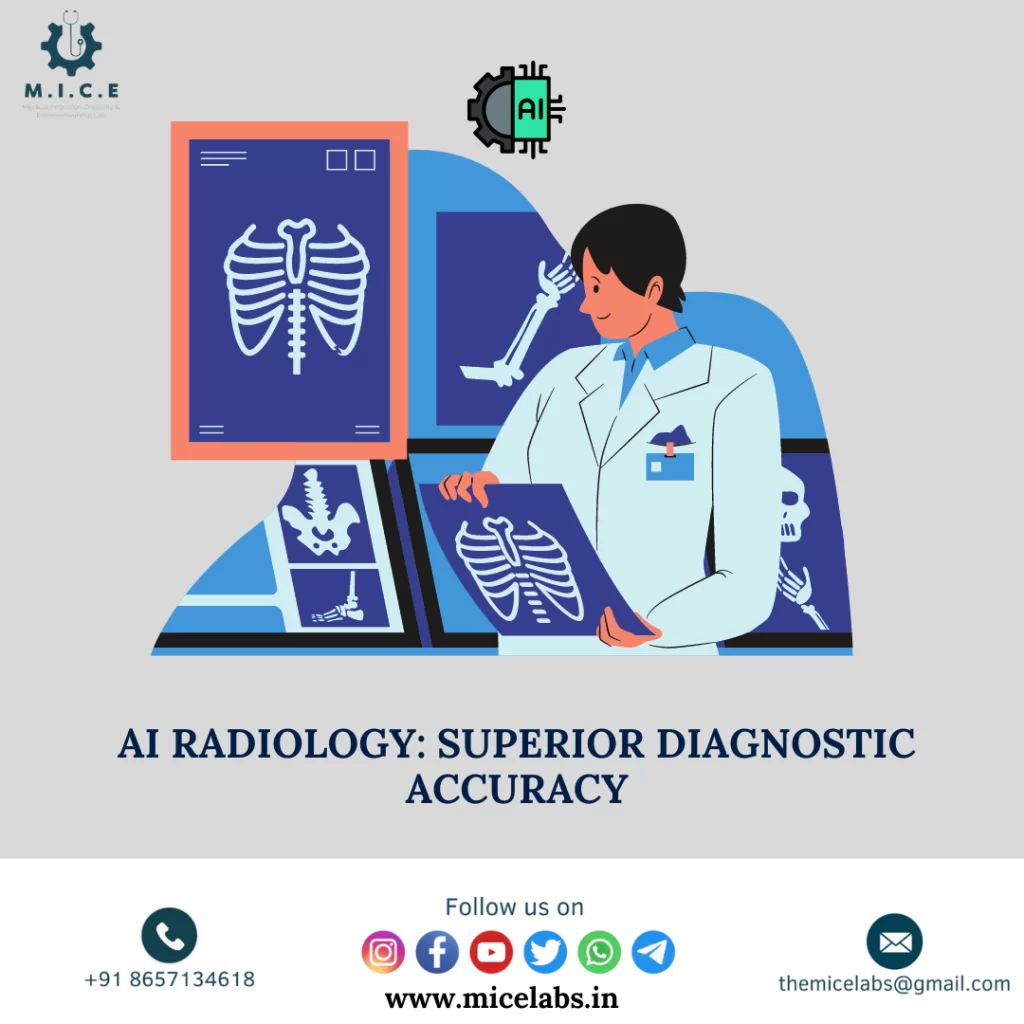Artificial Intelligence (AI) is revolutionizing various industries, and healthcare is no exception. In the realm of radiology, AI is becoming an indispensable tool, offering significant enhancements in diagnostic accuracy and efficiency. This blog delves into the transformative impact of AI on radiology, exploring its benefits, challenges, and future potential.
The Role of AI in Radiology: AI in radiology primarily involves the use of machine learning algorithms and deep learning techniques to analyze medical images. These technologies can identify patterns and abnormalities with high precision, often surpassing human capabilities. AI can be applied to various imaging modalities, including X-rays, CT scans, MRIs, and ultrasounds.
Benefits of AI in Radiology
- Improved Diagnostic Accuracy: AI algorithms can detect subtle changes in medical images that might be overlooked by the human eye. For instance, AI can identify early signs of diseases such as cancer, leading to earlier intervention and better patient outcomes. Studies have shown that AI can match or even exceed the accuracy of experienced radiologists in certain tasks.
- Increased Efficiency: AI can process large volumes of medical images quickly, reducing the time radiologists spend on routine tasks. This allows radiologists to focus more on complex cases and patient care, ultimately enhancing productivity and workflow.
- Enhanced Decision Support: AI systems can provide radiologists with valuable decision support, suggesting potential diagnoses and highlighting areas of interest. This collaborative approach helps radiologists make more informed decisions, improving the overall quality of care.
- Consistency and Standardization: AI algorithms offer consistent performance without fatigue, ensuring standardized interpretation of medical images. This consistency is particularly valuable in large-scale screening programs, where uniformity in diagnosis is crucial.
- Access to Expertise: AI can bridge the gap in regions with a shortage of radiologists. Remote areas can benefit from AI-powered diagnostic tools, providing access to high-quality radiological assessments even in underserved regions.
Challenges of AI in Radiology: While AI holds immense promise, its integration into radiology is not without challenges:
- Data Quality and Quantity: AI systems require vast amounts of high-quality data for training. Ensuring access to diverse and representative datasets is essential to develop robust and generalizable AI models.
- Ethical and Legal Concerns: The use of AI in healthcare raises ethical and legal issues, including patient consent, data privacy, and accountability. Establishing clear guidelines and regulations is crucial to address these concerns.
- Integration with Clinical Workflow: Seamless integration of AI tools into existing clinical workflows is vital. This requires collaboration between AI developers, radiologists, and IT professionals to ensure smooth adoption and minimal disruption.
- Continuous Learning and Adaptation: AI models must be continuously updated and validated to maintain accuracy and relevance. This involves ongoing monitoring and retraining to adapt to new medical knowledge and practices.
Future Prospects
The future of AI in radiology is bright, with ongoing advancements promising even greater impact. Integrating AI with other technologies such as natural language processing (NLP) and predictive analytics will further enhance diagnostic capabilities. Additionally, AI-powered tools will become more user-friendly, making them accessible to a broader range of healthcare professionals.
Tips and Tricks for Healthcare Professionals
- Embrace Continuous Learning: Stay updated with the latest developments in AI and radiology. Participate in workshops, webinars, and online courses to enhance your understanding of AI technologies.
- Collaborate with AI Experts: Work closely with AI developers and data scientists to ensure the development of clinically relevant and practical AI tools.
- Focus on Data Quality: Ensure the quality and diversity of data used for training AI models. Collaborate with institutions to share and access comprehensive datasets.
- Advocate for Ethical Practices: Promote ethical AI practices by advocating for patient consent, data privacy, and transparency in AI decision-making processes.
- Utilize AI as a Support Tool: Leverage AI as a decision support tool rather than a replacement for radiologists. Combine the strengths of AI and human expertise to deliver optimal patient care.
AI is transforming radiology by enhancing diagnostic accuracy, increasing efficiency, and providing valuable decision support. While challenges exist, the benefits far outweigh them, promising a future where AI and radiologists work together to improve patient outcomes. Embracing AI in radiology requires continuous learning, collaboration, and a commitment to ethical practices.
Stay informed, collaborate with experts, and leverage AI to revolutionize radiology and deliver better patient care.
#AIinradiology #Diagnosticaccuracy #Medicalimaging #AIbenefits #Radiologyinnovation #AIchallenges #Healthcaretechnology #Radiologytips #AIandradiologists #Futureofradiology

